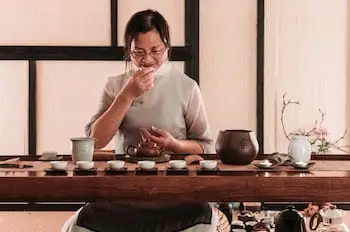Chinese tea culture stems back thousands of years, here’s an in-depth article that discusses where the Chinese tea culture originated from, what it looks like today and why it differs from other tea cultures.
The Chinese tea culture originated from monks, as Buddhism was embedded in the Chinese lifestyle. Gradually replacing alcohol, tea became synonymous with spiritual enjoyment. Now tea is integral in formal and informal Chinese occasions, boasting a range of Chinese tea wares and brewing styles.
Chinese Tea Culture
Culture stems back to the tea origins in China, its method of practice, and related beliefs within a community. The same applies to Chinese tea culture.
So Chinese tea culture refers to the origin of tea, the concept of tea as a part of Chinese occasions in which tea is used, their related beliefs, special tea wares used, and of course their very own brewing styles.
Below is an overview of the Chinese tea culture using these as a breakdown…
Origin of the Chinese tea culture
The origin of the Chinese tea culture is rather interesting when compared to the tea cultures around the world.
To begin with, tea was only used as medicine and well-renowned for its medicinal properties. Aside from this sometimes tea was used for cooking.
The origin of tea as a drink or habitual tea drinking started only in the middle of the 18th century.
Before tea drinking became part of the community, tea drinking was a general practice mostly undertaken by Buddhist monks. Some of the more famous teas are grown by monks in the mountain areas around monasteries.
These areas had access to good quality spring water. It was during this cultivation habit among monks that gave rise to communal tea rituals.
However, the starting point of this habitual tea drinking came with the publication of “The Classic of Tea” by the Tang dynasty writer Lu Yu. This book tied tea-drinking with Buddhist thought …which greatly influenced the highly spiritual Chinese culture at that time.
The book focused on praising tea as a valued “enhancer of the mind” and an agent to promote wakefulness including its unique medical qualities.
It was at this time alcohol was falling out of favor, again because of the Buddhist attitudes in being cautious about the dangers of intoxications.
This all combined reflected on tea as an almost spiritual drink …and a perfect alternative to replace alcohol.
As such eventually tea became a part of the Chinese daily routine and of occasions – and thereby truly embedded as part of the overall Chinese culture.
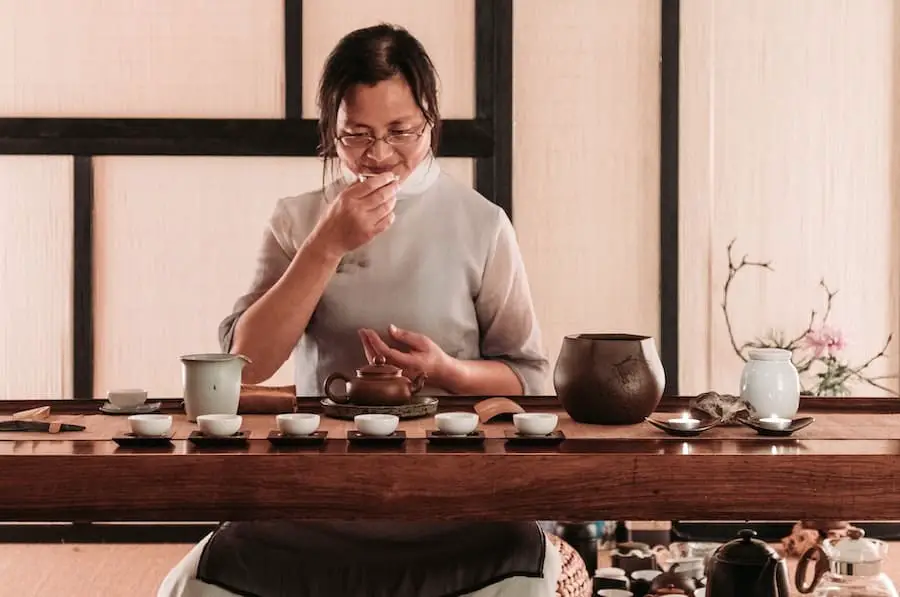
The concept of tea in Chinese tea culture
Since the inception of habitual tea drinking, tea is regarded as one of the seven daily necessities. Listed alongside the other six daily necessities below…
- Firewood
- Rice
- Oil
- Soya sauce
- Vinegar
- Salt
- Tea
Besides, drinking tea is considered a spiritual enjoyment in the Chinese tea culture.
It’s also considered an art or a way of cultivating people’s character and positive mindset while nourishing nature.
Also, a Chinese tea ceremony in the Chinese tea culture helps underpin four basic spirits.
I love these four spirits, the four spirits are:
- Honor
- Beauty
- Harmony
- Respect
Occasions in which tea is used in China
Tea is considered a social drink in the Chinese tea culture.
In China, tea is believed to be a drink that connects and bonds people together with care, respect, honor, and affection.
Apart from happy occasions alone, tea also replaced alcohol in ritual occasions such as funerals and for offerings deities.
As such, tea can be found throughout a raft of occasions in china. Meaning tea is a part of almost every formal and informal occasion in China.
However, the way it’s presented, how it’s served on occasion and related gestures differ from occasion to occasion.
In a culture-sensitive country like china, every gesture related to tea from brewing to serving to drinking …and even disposing is inherently sensitive within the Chinese tea culture.
As the great example of this, you can observe how tea …and the role it plays in a marriage occasion in China.
In a traditional Chinese marriage ceremony, the couple kneels in front of their parents and serve them tea. This form of serving is considered an expression of gratitude to the parents.
There is also a customary phrase that is said when the couple serves tea. The phrase translates to “Thank you for bringing us up. Now we are getting married. We owe it all to you.”
The parents of the couples will accept the tea and drink a small portion of of it before handing over a red envelope to the couple. The red envelope symbolizes “Good Luck”.
Few other places perform these important rituals around tea. But fair to say if you’re looking at becoming more proficient in your tea journey, you can start with my simple but perfectly rounded tea sommelier course.
Chinese weddings
It doesn’t stop there either, there’s also a special tea ceremony at Chinese weddings.
This is done as a way of meeting and bonding with family members of both parties. Yet again here it’s clear that tea is indeed a social drink within the Chinese tea culture.
The couple serves tea to all their family members and addresses them using their respective titles.
Drinking this ritualized tea symbolizes acceptance, whereas refusing to drink symbolizes any opposition to the wedding. Though thankfully, refusing to drink the tea served is a rare occurrence.
As such, it’s pretty clear that tea indeed plays a role that goes way beyond a drink within the Chinese tea culture.
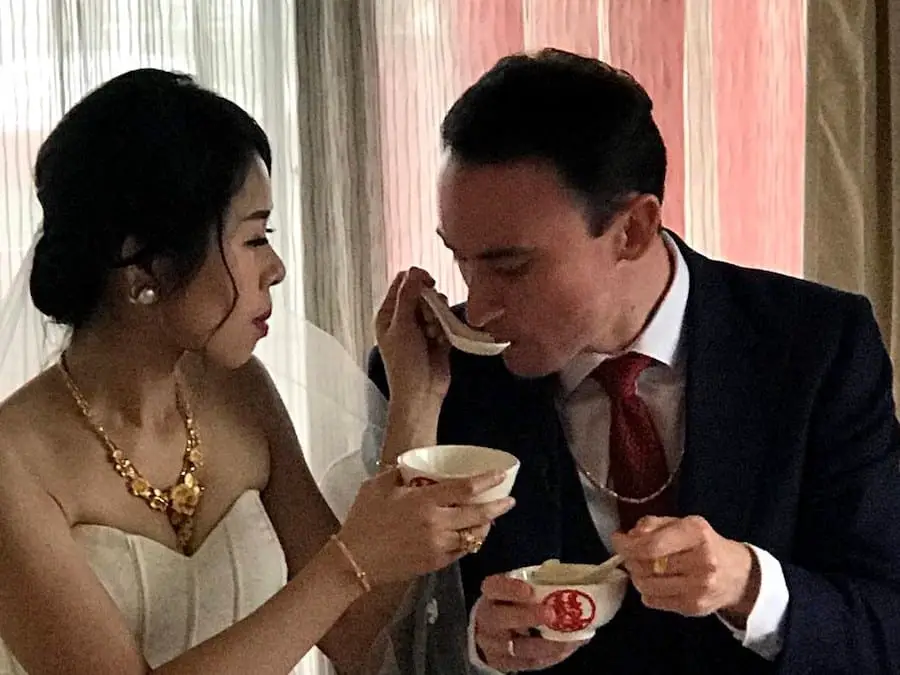
Tea wares are part of the Chinese tea culture
One important element of the overall tea culture in China is a range of specialist tea wares.
Although this might sound like I’m making it over-complex, Chinese tea wares are very specific and indeed forms part of the overall artistic nature of the occasion.
In the Chinese tea culture, it’s very important to use the right teaware to brew the perfect cup of tea.
Besides, the Chinese tea culture believes the use of the correct tea wares is important …so that the precious taste of the tea does not go to waste.
For example, the finest and most delicate of teas – like green tea, is brewed in a colorless and transparent pot
Whereas oolong tea is often brewed in a refined purple clay “Zisha” teapot. There are even some special bowls with covers to drink scented tea. This is designed in a way to drink tea without losing the aroma.
Because of these reasons, there are specific tea wares for different types and classes of teas.
As a general rule to decide upon the correct tea ware for Chinese tea, three things matter, they are location, number of drinkers, and the variety of tea to be served.
Below are some Chinese tea wares that are a unique part of the Chinese tea culture.
- The lidded tea bowl (盖碗/găiwăn) & fairness pitcher (公道杯/gōngdaò bēi)
- Purple sand teapot (紫砂茶壶/zĭshà cháhú)
- Tea tray (茶盘/chápán)
- Scent cup (闻香杯/wén xiāng bēi) can be obtained along with the Gaiwan
- Tea holder (茶匙/chá chí) This can be any dish really, I’ve added the image of mine below
- Some Tea tongs (茶夹/chá jiā) You can just use some nice small tongs or a teaspoon
- Tea needle (茶针/chá zhēn) For breaking apart Pu-Erh teacakes
- A Tea brush (茶刷/chá shuā) For brushing tea evenly around the tray
- Tea pet (茶宠/chá chóng) Here’s a cute one!
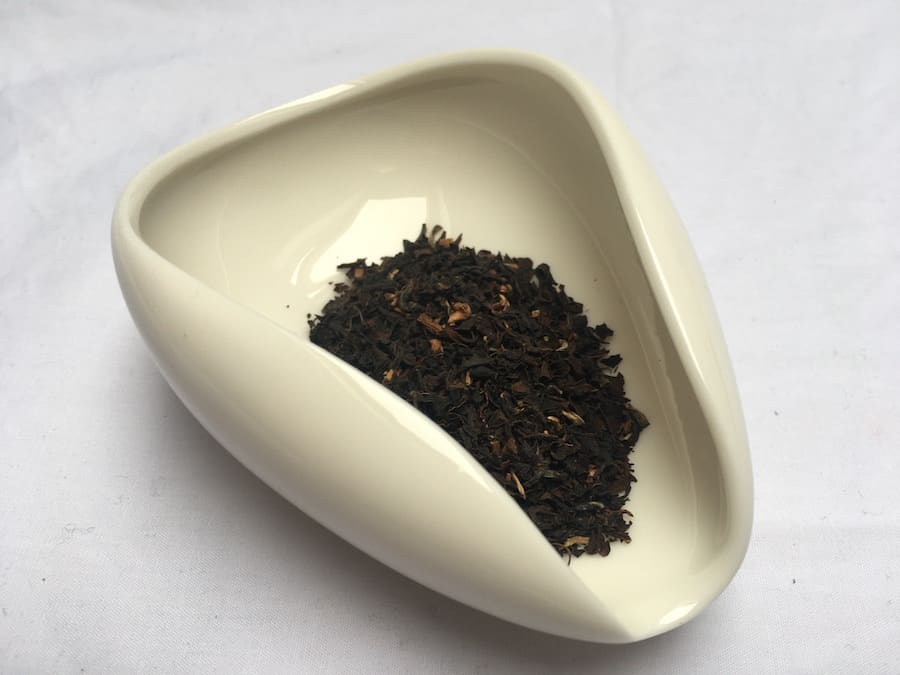
Brewing styles within the Chinese tea culture
With specialized tea wares belonging mainly to its own culture, the Chinese do make use of a range of tea brewing styles in their unique tea making.
Some of these processes are as follows:
- P’in cha – This is considered the most authentic Chinese brewing style.
- Gong Fu Cha – This is a ceremonial way of brewing oolong tea.
- Brewing by Lu Yu method – This is a brewing style in which tea is boiled in a glass teapot on an open fire. This method is most suitable for brewing shu Pu’er for the best flavor.
- Tang dynasty brewing – This is the method of brewing tea in a clay teapot on an open fire. Suitable for aged sheng or shu Pu’er.
- Chaozhou ceremony – This is a style used for making a strong brew. Oolong is mostly used for this brewing style.
- European single – Time steeping of tea in a large amount of water – This is a European brewing style adapted from the Chinese. This is not, however, a tea specific brewing style.
- The brewing of cold tea – Again a European brewing style adapted from the Chinese style. This is also not a tea specific brewing style.
As I mentioned earlier, the Chinese tea culture is an act of beauty, but it doesn’t have to be. For most people looking to get into tea more, it can actually be a simple journey. So start with my simple tea course and begin your journey towards and for the love of tea.
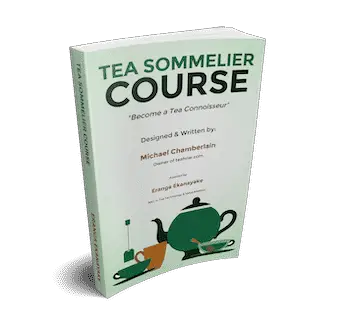
Take the fast track and become a tea connoisseur
Whether for enjoyment or considering a career as a tea sommelier. This course has everything you need to enhance your tea knowledge and tea-tasting skills.
This course keeps it simple with step-by-step tea tasting and easy reference guides
For pleasure, or as a precursor to a career in the tea industry. Find out what tea sommelier actually does, their career paths, and what they earn.

Find out more about the Teahow Tea Sommelier Course!
Find out more about the Teahow Tea Sommelier Course!
